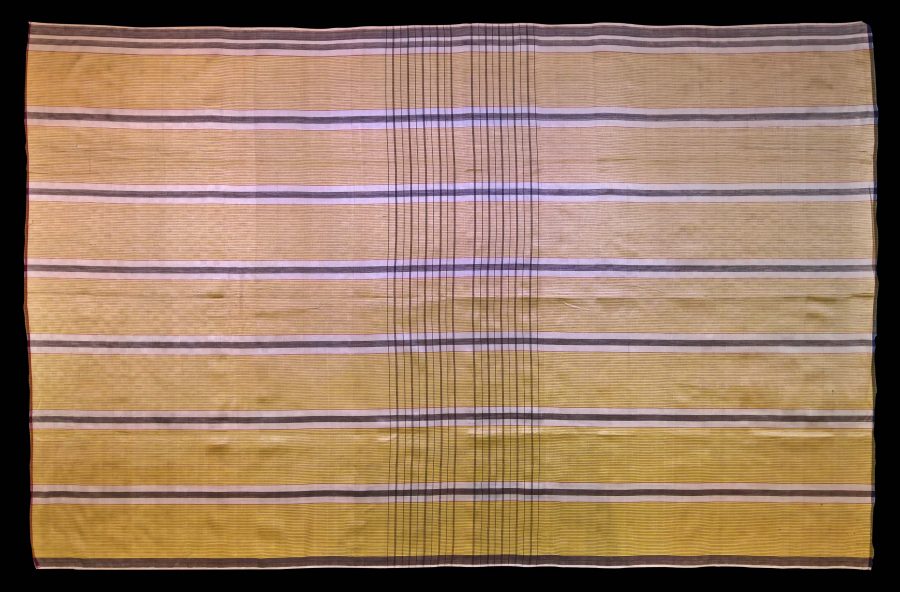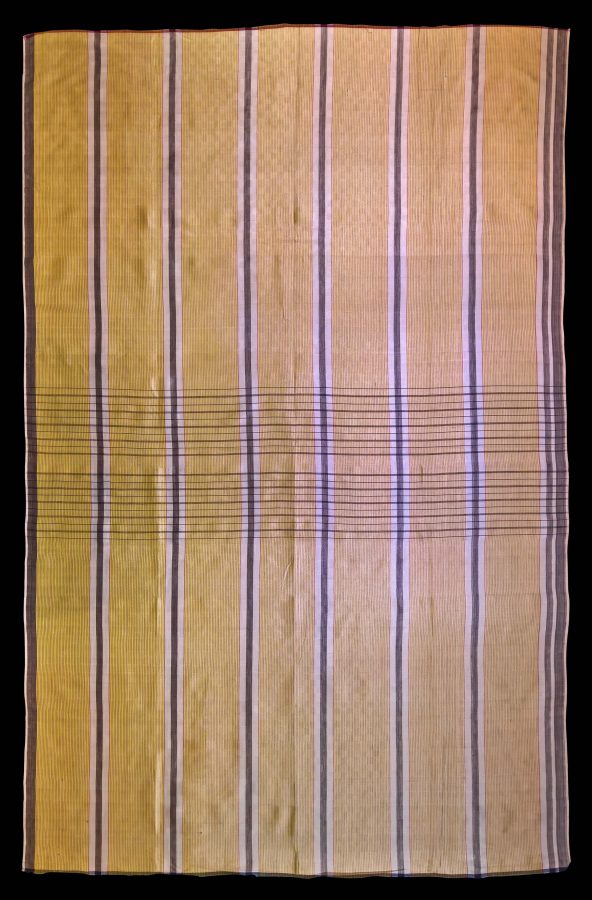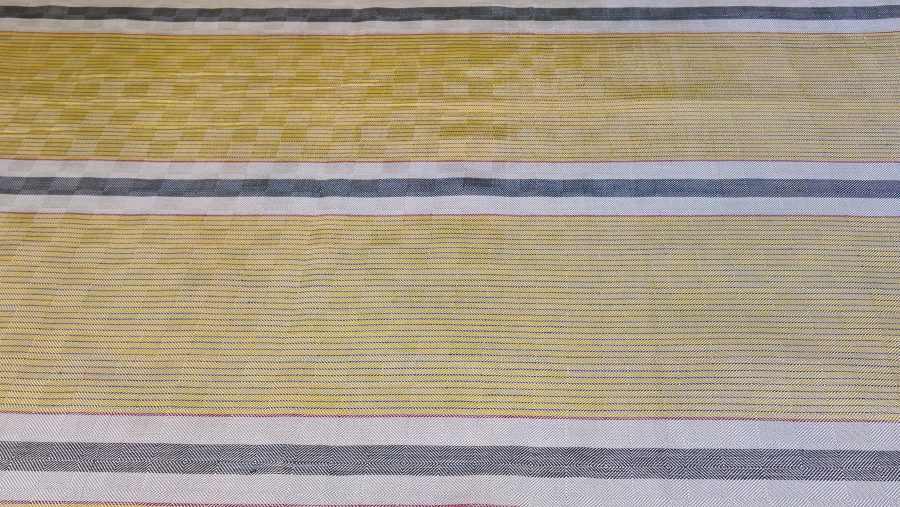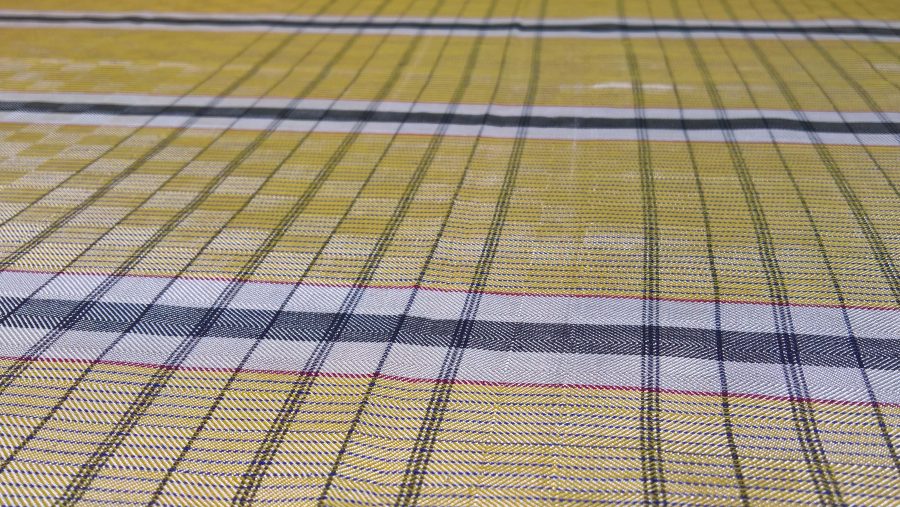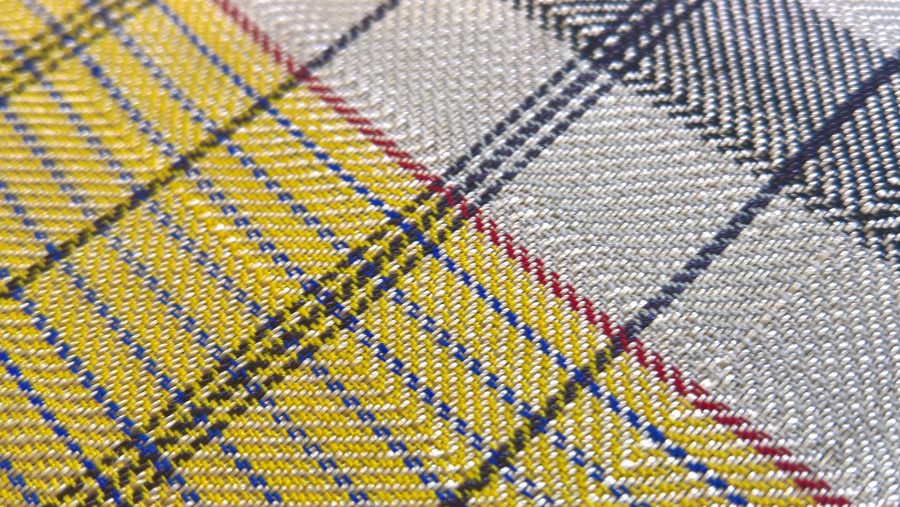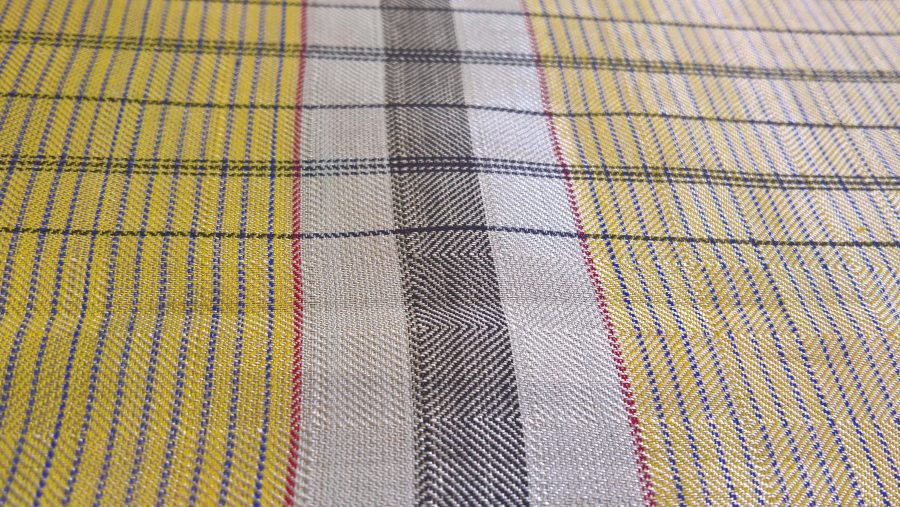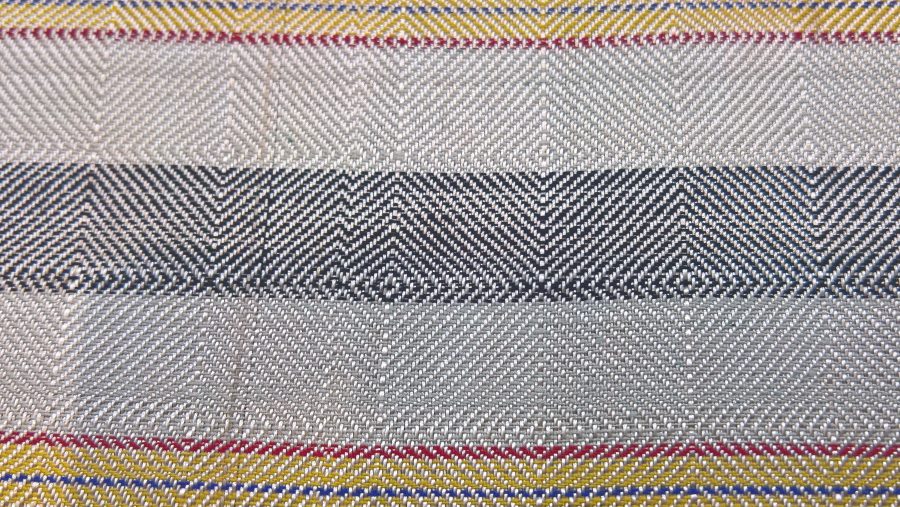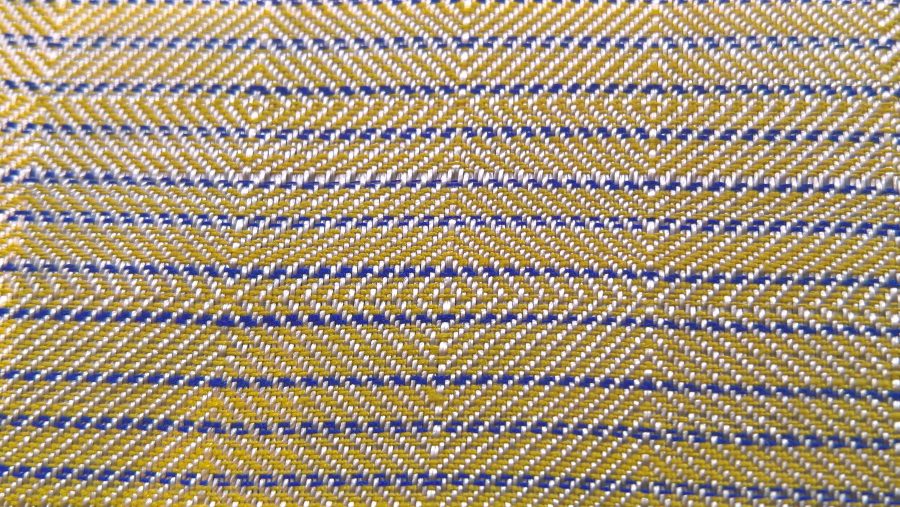Enquiry about object: 5354
Malay Woven Silk Textile (Kain Tenun)
Malay People, East Coast, Malay Peninsula, Malaysia early 20th century
182cm x 117cm
Provenance
collected by Alwyn Sidney Haynes (1878-1963), and thence by descent. Haynes was a colonial administrator in Malaya and the Straits Settlements between 1901 and 1934. He held many posts including Acting British Resident, Pahang (1924); British Resident, Perak (1925); British Advisor, Kedah (1925); British Advisor, Kelantan (1930); and Acting Colonial Administrator, Straits Settlements (1933), after which he retired and returned to England, and lived near Stratford-upon-Avon, and then in Leamington Spa. Haynes loaned some of the items he collected in Malaya to the Pitt Rivers Museum in Oxford in 1939. He was awarded an Order of the British Empire (OBE) in 1950.
This whole panel of kain tenun (literally, ‘woven cloth’) was acquired new in the 1930s or earlier by a British colonial official. It was brought back to England and has been in storage since. As a consequence, it is in perfect, ‘as new’ condition. It is of predominantly yellow, black and white silk thread.
Kain tenun was handwoven often by small family enterprises in the traditional way using the Malay or Siamese floor weaving loom known as a kek Siam. It was produced on the Malay peninsula, mostly in Kelantan, Terengganu and Pahang states. The resulting textile was used for sarongs but also for kain samping – the shorty sarongs Malay men traditionally wore over their trousers. Kain tenun was also tailored into traditional shirts for women (known as baju kurung and baju kebaya) and shirts for men (baju Melayu). The finest producers of kain tenun received commissions to supply the Malay peninsula’s many royal courts for most of the sultans, their families, and officials all wore the textile.
The example here with its horizontal stripes was known as a jalur melintang pattern.
As mentioned, it is in perfect condition. The colours are as bright as the day the textile was woven. It has never been used.
References
Ismail, M.S.Z., et al., Muzium Tekstil Negara/National Textile Museum, Department of Museums Malaysia, 2012.
Uda, Y.M.R.D.P. Fuziah Raja Tun et al., Tradition & Continuity: Woven and Decorated Textiles of the Malay Peninsula, Islamic Arts Museum Malaysia, 2013.


